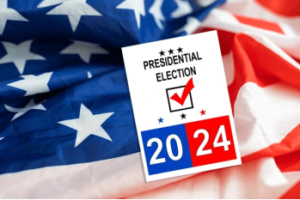
Introduction
In the picturesque landscapes of North Carolina, nestled amidst the lush forests and rolling hills, Trails Carolina stands as a therapeutic wilderness program. Aimed at helping struggling adolescents navigate the challenges of life, Trails Carolina has garnered both praise and criticism. While many share success stories of personal growth and transformation, a darker underbelly has emerged, revealing a collection of harrowing tales that echo through the trees like haunting whispers. This article delves into the chilling Trails Carolina horror stories, shedding light on the alleged dark side of this wilderness program.
The Allure of Trails Carolina
Trails Carolina markets itself as a therapeutic intervention for troubled teens, offering a unique approach to healing by immersing participants in the natural beauty of the outdoors. The program combines adventure therapy, individual counseling, and group activities to encourage personal development, emotional resilience, and a reconnection with nature. However, beneath this idyllic exterior, some former participants and their families recount disturbing experiences that cast a shadow over Trails Carolina’s reputation.
The Veil of Secrecy
One common thread among the Trails Carolina horror stories is the veil of secrecy that envelops the program. Families often report feeling kept in the dark about their child’s experiences, raising concerns about transparency and communication. Some allege that their children were subjected to harsh conditions and disciplinary measures without their knowledge or consent.
Isolation and Fear Tactics
Several accounts describe a sense of isolation deliberately imposed upon participants. Removed from the familiar comforts of home and thrust into the wilderness, teens find themselves cut off from the outside world, exacerbating feelings of vulnerability and fear. Critics argue that this isolation, coupled with alleged fear tactics employed by staff, creates an environment where teens are more likely to comply out of desperation rather than genuine personal growth.
Allegations of Abuse
Perhaps the most disturbing Trails Carolina horror stories involve allegations of physical, emotional, and psychological abuse. Former participants and their families recount instances of mistreatment by staff members, ranging from excessive discipline to verbal harassment. These allegations have sparked investigations and legal actions, further tarnishing the program’s reputation.
The Impact on Mental Health
While some families report positive outcomes from Trails Carolina, others describe a worsening of their child’s mental health during and after the program. Critics argue that the harsh conditions and disciplinary measures may exacerbate existing mental health issues, leading to long-term consequences for the adolescents involved.
Regulatory Scrutiny and Legal Battles
Trails Carolina has not been immune to regulatory scrutiny and legal battles. The program has faced investigations and lawsuits related to allegations of abuse and negligence. Some families argue that the program’s lack of oversight and accountability allowed these alleged abuses to persist, highlighting a need for increased regulation in the troubled teen industry.
Voices of the Survivors
The Trails Carolina horror stories are not confined to the shadows; survivors have stepped into the light to share their experiences and advocate for change. Online forums and social media platforms have become platforms for survivors to connect, support each other, and raise awareness about the alleged abuses within the program. Their voices serve as a powerful testament to the need for transparency, accountability, and ethical practices within therapeutic wilderness programs.
The Ethical Dilemma of Wilderness Therapy
Trails Carolina horror stories underscore the broader ethical dilemma within the wilderness therapy industry. While some argue that the wilderness can serve as a powerful therapeutic setting, others question the lack of standardized practices, oversight, and accountability. The debate raises crucial questions about the balance between providing effective therapeutic interventions and safeguarding the well-being of vulnerable participants.
Conclusion
Trails Carolina horror stories cast a chilling shadow over the once-praised wilderness therapy program. While some families praise the program for its positive impact on their troubled teens, a growing number of voices share tales of abuse, fear, and trauma. As the industry faces increased scrutiny and survivors speak out, the need for transparency, accountability, and ethical practices becomes ever more apparent. The Trails Carolina horror stories remind us that even in the serene beauty of the wilderness, darkness can lurk, and the path to healing must be tread carefully and responsibly.






